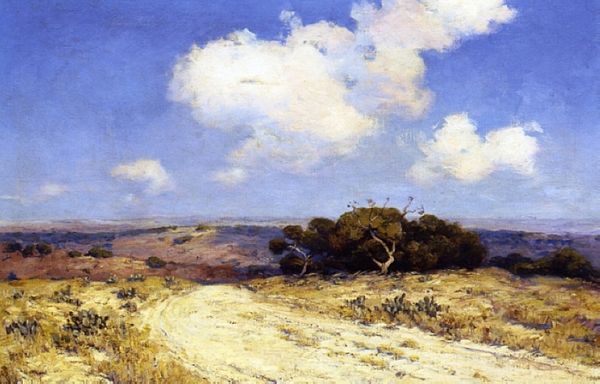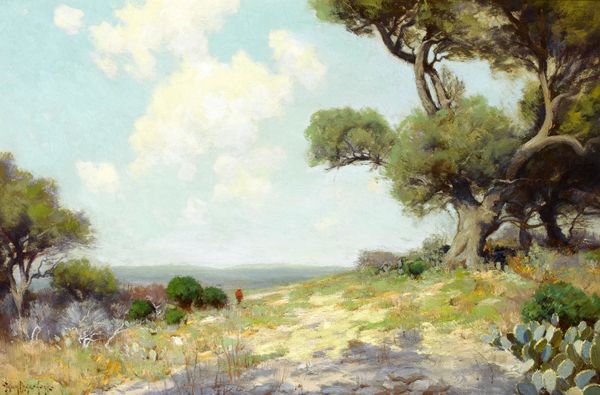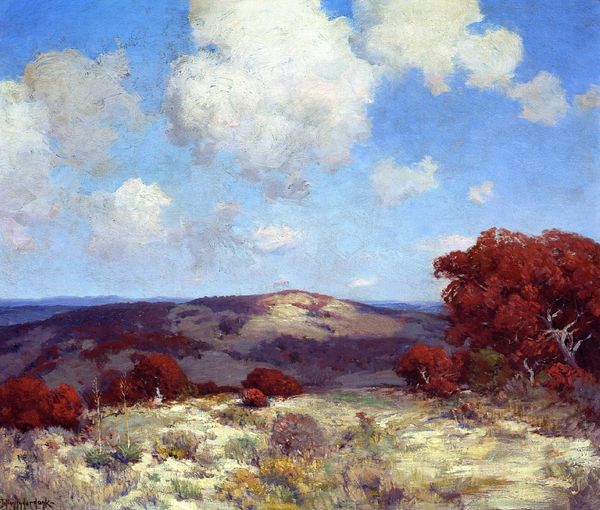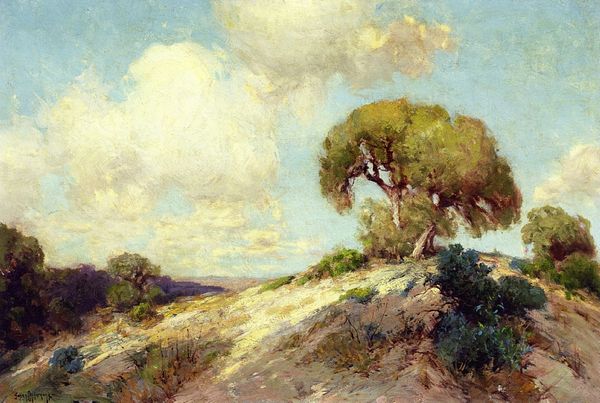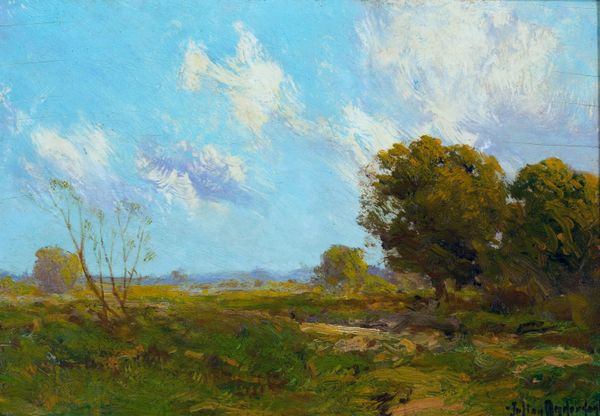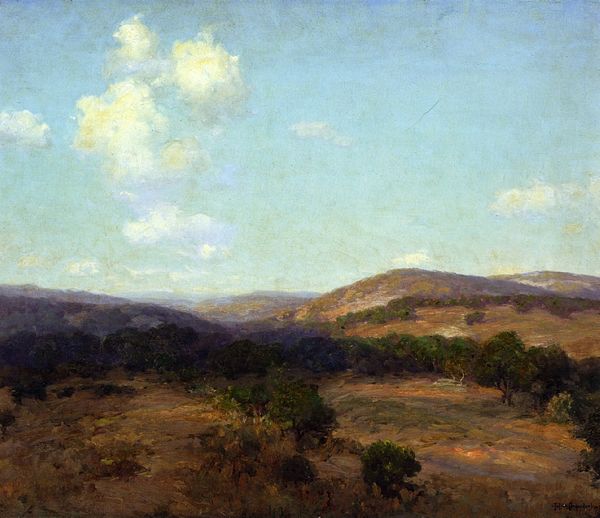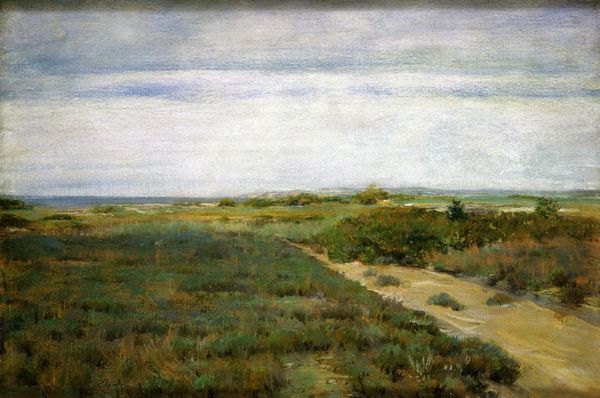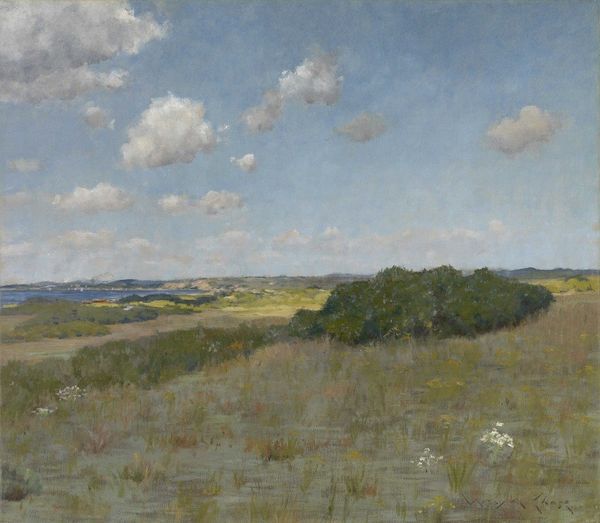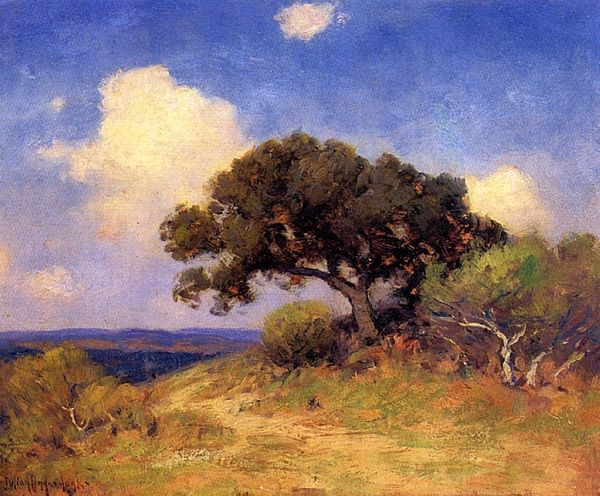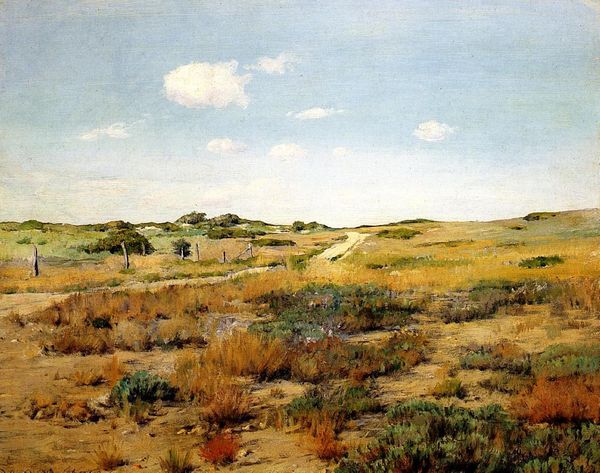
Copyright: Public domain
Editor: This is Robert Julian Onderdonk's "Hill Country Lane," painted in 1911, using oil paint. It’s just so...bright. All that sun and sky! What strikes you when you look at it? Curator: Onderdonk’s "Hill Country Lane" is a really compelling example of Texas Impressionism, and considering the time it was made, it tells us a lot about the construction of regional identity through art. What details seem specifically Texan to you, looking at it now? Editor: I guess the landscape itself – it’s so vast and open. And the… I think those are cacti? It definitely doesn’t look like my hometown! Curator: Exactly! Onderdonk was consciously creating imagery that would define Texas for a broader audience. He was participating in the construction of a visual vocabulary. Note how this natural scene presents what some viewers may think is uniquely representative of the American Southwest: sun-drenched, expansive landscapes that give the feeling of openness, freedom, maybe even the pioneer spirit! What isn't shown is equally significant: cities, industry, or signs of complex society. Editor: So, it's like… a curated view of Texas? Almost like propaganda? Curator: You’ve hit on a crucial point! While "propaganda" might be too strong, this painting participated in shaping a specific perception. Who benefits from portraying Texas as a pristine, untamed frontier? Consider the social and political dynamics of the time—land ownership, migration, resource exploitation. The image certainly simplifies those issues. Editor: Wow, I didn’t even consider that a landscape could have a political angle. Curator: Landscapes are rarely just landscapes. They are cultural products loaded with meaning. Thinking about what this artwork meant in 1911 really reframes how I look at it today.
Comments
No comments
Be the first to comment and join the conversation on the ultimate creative platform.
